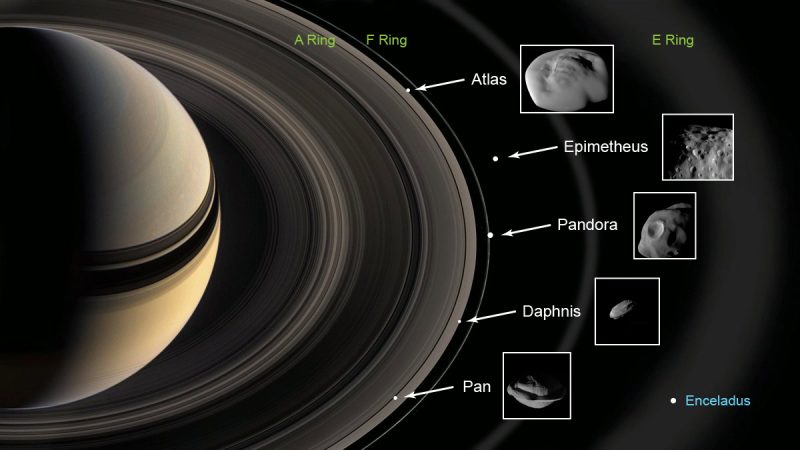
Saturn’s moon count is at 145
In the battle for moon dominance, Saturn is once again on top. New discoveries by a team of astronomers added 62 new moons to Saturn’s existing 83, bringing its total to 145. That tops Jupiter’s 95 recognized moons. Therefore, Saturn is the first planet known to have more than 100 moons. On May 11, 2023, the University of British Columbia (UBC) announced that increasingly sensitive techniques have allowed astronomers to detect fainter and smaller moons around the ringed planet.

Edward Ashton, formerly of the UBC and now at Taiwan’s Academia Sinica Institute of Astronomy and Astrophysics, led a team that used the shift and stack method to find the newest moons. The press release explained how this method works:
Shifting a set of sequential images at the rate that the moon is moving across the sky results in enhancement of the moon’s signal when all the data are combined, allowing moons that were too faint to be seen in individual images to become visible in the stacked image.
Ashton said:
Tracking these moons makes me recall playing the kid’s game Dot-to-Dot, because we have to connect the various appearances of these moons in our data with a viable orbit … But with about 100 different games on the same page and you don’t know which dot belongs to which puzzle.
Moons down to 1.5 miles
The team made their discoveries using the Canada-France-Hawaii Telescope in Mauna Kea, Hawaii. They used the shift and stack method on data from 2019 to 2021 to spot moons down to about 1.5 miles (2.5 km) in diameter. It takes years’ worth of data to confirm that these objects were moons and not just stray asteroids in the images.
Irregular moons
The new moons all belong to the irregular category. This designation means that their orbits are large, elliptical, and at a different inclination compared to Saturn’s regular moons. Their odd orbits lead astronomers to think that Saturn’s gravitational well captured these moons as opposed to them forming along with the giant planet.
The irregular moons tend to orbit together in clumps. Astronomers know of three such clumps around Saturn, which they’ve named for Inuit, Gallic and Norse mythologies. The Norse group has the largest population of moons. The new discoveries all fell within these three groups, and it was no surprise that the Norse group was home to most of them.
The scientists believe that collisions created these clumpy lunar groups. They said the many small moons in retrograde orbits are probably the result of the breakup of a larger moon. These moonlets can provide insight into the history of Saturn. As team member Brett Gladman of UBC explained:
As one pushes to the limit of modern telescopes, we are finding increasing evidence that a moderate-sized moon orbiting backward around Saturn was blown apart something like 100 million years ago.

Bottom line: Saturn’s moon count grew by 62 with the newest discovery, bringing the planet’s satellite total to 145. That puts it above Jupiter’s 95 recognized moons.
Via the University of British Columbia
Read more: How Saturn’s lost moon Chrysalis became its rings
Read more: Saturn’s moon Mimas might have an ocean
The post Saturn’s moon count grows by 62 for a record 145 satellites first appeared on EarthSky.
0 Commentaires